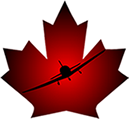 |
|
Landing: Part II, Visual Environment“No object is mysterious. The mystery is your eye.“ --Elizabeth Bowen, The House in Paris, 1935- Last month, we took a look at the first stage of the landing process, the approach. We discussed the idea that a good landing begins with a good approach and that a poorly planned or executed approach will sadly reduce the chances of performing a successful landing. Of course, an experienced pilot flying an aircraft with which he or she is familiar can often salvage a poor approach and still achieve a successful landing. This is not, however, a recommended procedure and certainly exposes the pilot and his or her aircraft and passengers, not to mention those on the ground, to unnecessary risk. As the AOPA Air Safety Foundation’s 1996 Nall Report reminds us, “Takeoff and landing account for about three percent of the time spent in a typical cross-country flight, but 47 percent of all accidents occur during these phases.” Today, I’d like to take a small detour and talk about the visual environment and reality we face on final approach to landing. Final approach is a potentially exciting phase of flight. Things are developing and changing quickly and it is important we are aware of the visual clues and potential illusions we may have to work through to achieve our end: a successful landing. Our visual information flow is critical to achieving a successful landing. There are several factors, some environmental and some products of our decision-making, that affect the information available to us. Environmental factors include ambient light levels, the position of the sun and the amount of glare we experience, rain, snow, hail, and the background against which we must distinguish detail. Landing on a dirt strip located in a dirt pasture presents a different set of visual images than we might see landing on a black, paved runway with nicely painted lines set against trimmed grass verges. An up-sloping or down-sloping runway will offer unique visual challenges as will a runway covered with pooled water or snow. Pilot decision-making about visual focal points is a product of our training and experience. Knowing where and how to look at things is an important factor in ensuring a safe landing. A significant aspect of our decision making is developing an understanding of how our perceptual equipments works and the illusions to which we are subject. A quick review of our secondary school biology will remind us that there are two types of light receptors in the eye: rods and cones. Cones are concentrated near the centre of the eye, the fovea; rods are concentrated around the periphery. Cones are the primary receptors for colour, visual acuity, and recognition of detail; rods have no colour sensitivity, are poor at receiving specific detail, but are the primary receptors for the perception of motion. Under low light conditions, scotopic vision, rods provide the major source of visual information to the brain. Under bright light conditions, photopic vision, the cones predominate. Between scotopic illumination levels and photopic illumination levels is the mesopic range, or mid-level lighting conditions, where both cones and rods function well. In this light range, vision is both peripheral and central and colour begins to become clearly apparent (1). For sharp vision, photopic vision levels of light are required and we must be looking directly at an object. In low light conditions, we cannot see an object as clearly when looking directly at it. We must look a bit to the side to maximize our clarity. Averted vision is the best way to maximize the efficacy of the rods (2). Without beating all that to death, what we know is that the centre of our vision is our best source of information on detail and colour; the peripheral areas of our vision are our best source of information regarding motion. Both functions must be working in concert to develop a full spectrum of visual perception of our environment, and the ambient light levels directly affect the quality of our total, visual picture. In poor light conditions, we must rely much more on our peripheral vision capabilities for necessary information. We also know that, when an object is approaching us at high speed, our depth perception, a function of our binocular—two eyes—system of visual perception, is not nearly as efficient as when we are looking at a stationary object. In simple terms, an object moving toward or away from us is never in the same place once. Under normal circumstances, we depend on triangulation to determine distance. When the triangulation equation is in constant and rapid change, it is much more difficult to determine how far away an object is. The greater the magnitude of that change, the quicker objects are approaching or receding, the poorer our ability to accurately determine the distance. To add insult to injury, we are not viewing the approaching runway straight on. We are looking both forward and downward making the perceptual problem even more complex. As we near our intended target on the runway, our round-out point, objects in view appear to both increase in size and move in various directions relative to our touchdown point. This phenomenon is referred to by those who study these things as the Expansion Theory and can be very helpful if it is well understood (3). Our first illusion is that, visually, we remain stationary and the world around us moves. Points of reference or objects that appear to be moving downward during our approach are points we will overshoot. Points or objects appearing to move upward are points we will undershoot, for example, the end of the runway. Points or objects that appear to move in a horizontal pathway are ones that are abeam of our point of intersection with the runway. An object or point right at our touchdown point will remain stationary in our visual field. Everything else, as we approach, will appear to move away radially. For example, an object that is beyond and to the left of our impact point will appear to move up and away to the left as we approach. At the centre of our visual field, often referred to as the still point, objects will remain stationary. This is the point of our intersection with the runway and defines our point of flair. In fact, perspective—our perception of distance in terms of relative size—rather than binocular depth perception takes on a much more dominant role in determining distance and position during approach. It is not even required that a pilot have two, functioning eyes. According to published FAA records, 4005 one-eyed people hold valid FAA pilot certificates in the United States; 75 of these pilots hold first class medicals. One of the all-time great aviators, Wiley Post, was living proof that a one eyed pilot is quite capable of executing successful landings. No difference in safety records has been noted between one eyed and two eyed pilots. Understanding the flow of visual information presenting itself to our little brains during the final approach to landing can be of great help in achieving a successful landing. The major key to allowing our brain to process this vital information is to stabilize our approach by maintaining a constant approach path, rate of descent, and airspeed. A stabilized approach allows us to control and simplify the flow of visual information. It allows us to use our central visual acuity to find and identify our touchdown point and to align our aircraft with the centreline of the runway; it greatly assists us to develop a clear sense of distance and height from our peripheral vision. By consciously denying the urge to fixate on our touchdown point, by consciously keeping our gentle scan going, we also allow the capabilities of our peripheral vision to apprehend and pass along information regarding height, relative motion and perspective in a useful form. This becomes particularly critical when faced with an up-sloping or down-sloping runway that gives us the illusion of either being too high or too low on approach. As A. Howard Hasbrook so clearly points out, “If a pilot's having trouble with his [or her] landings, it's a sure bet he [or she] is not looking in the right place at the right time” (4). End Notes
|


